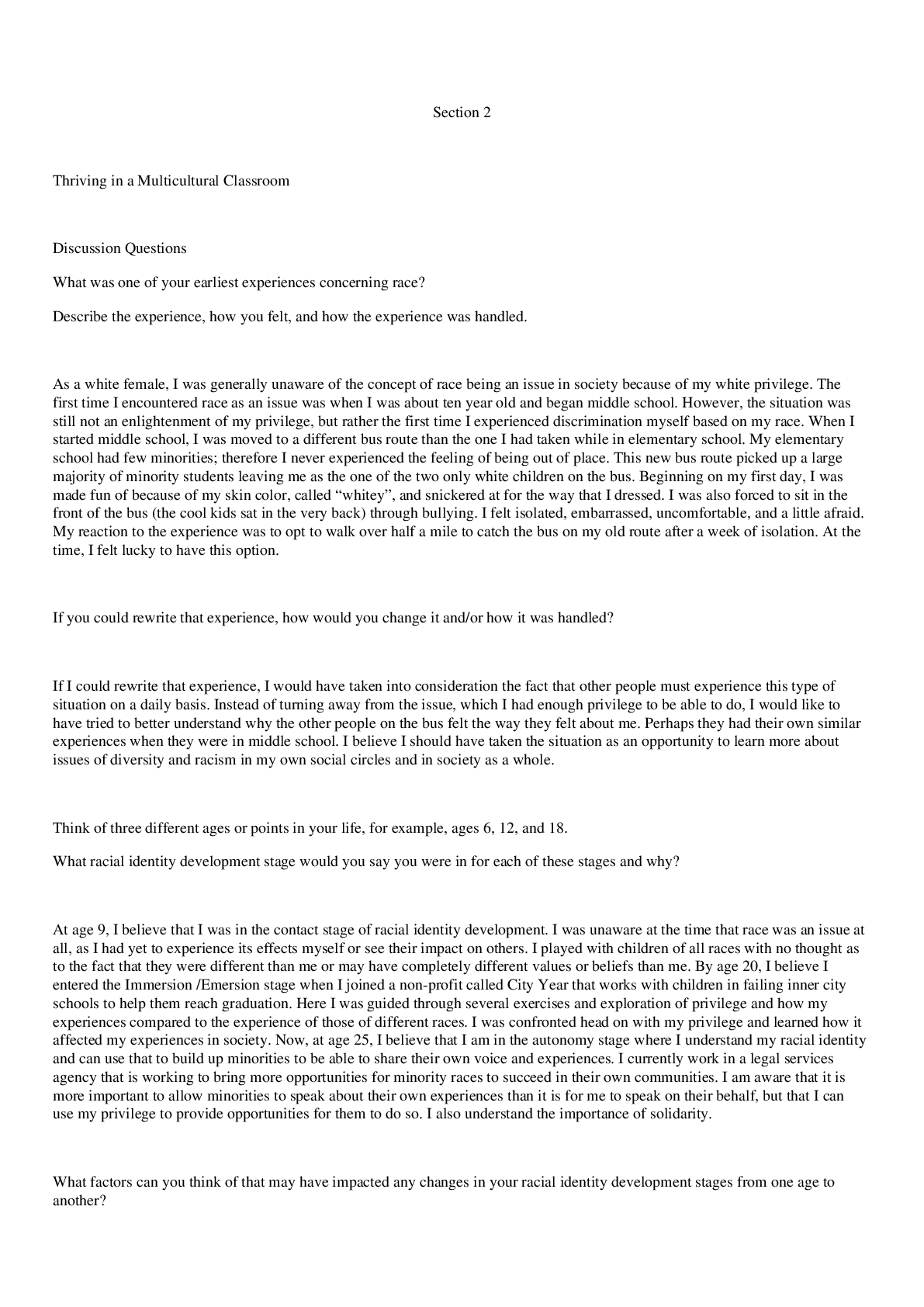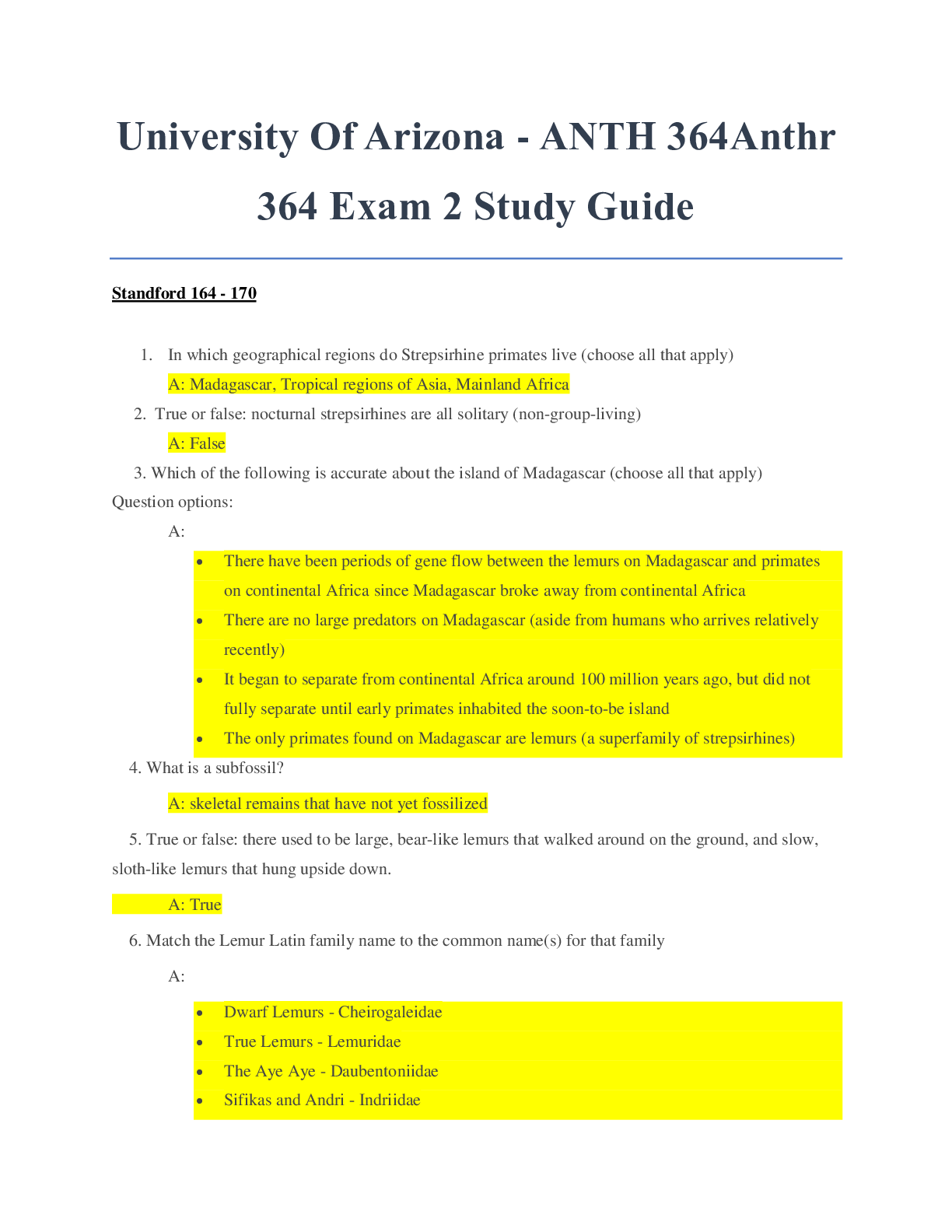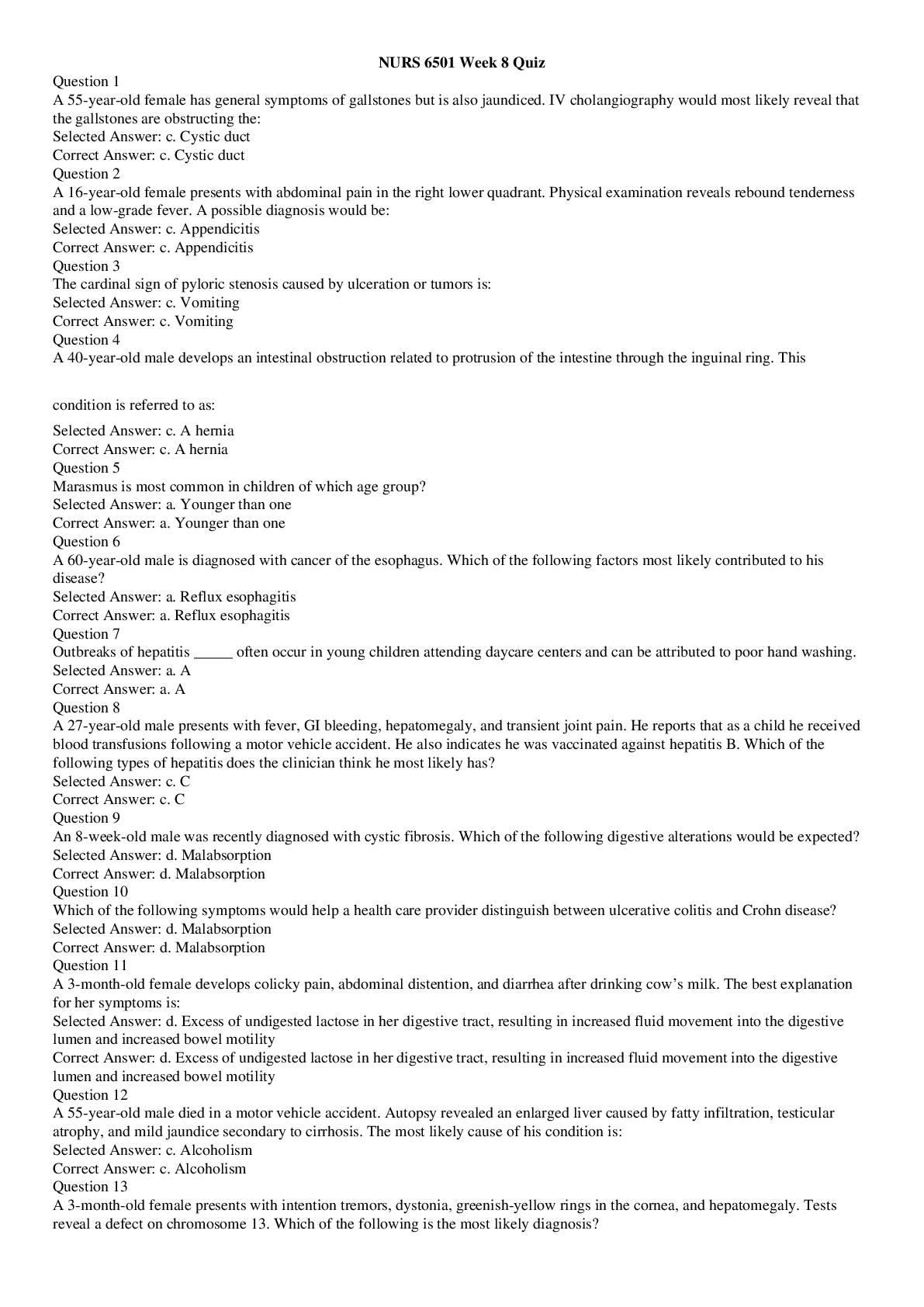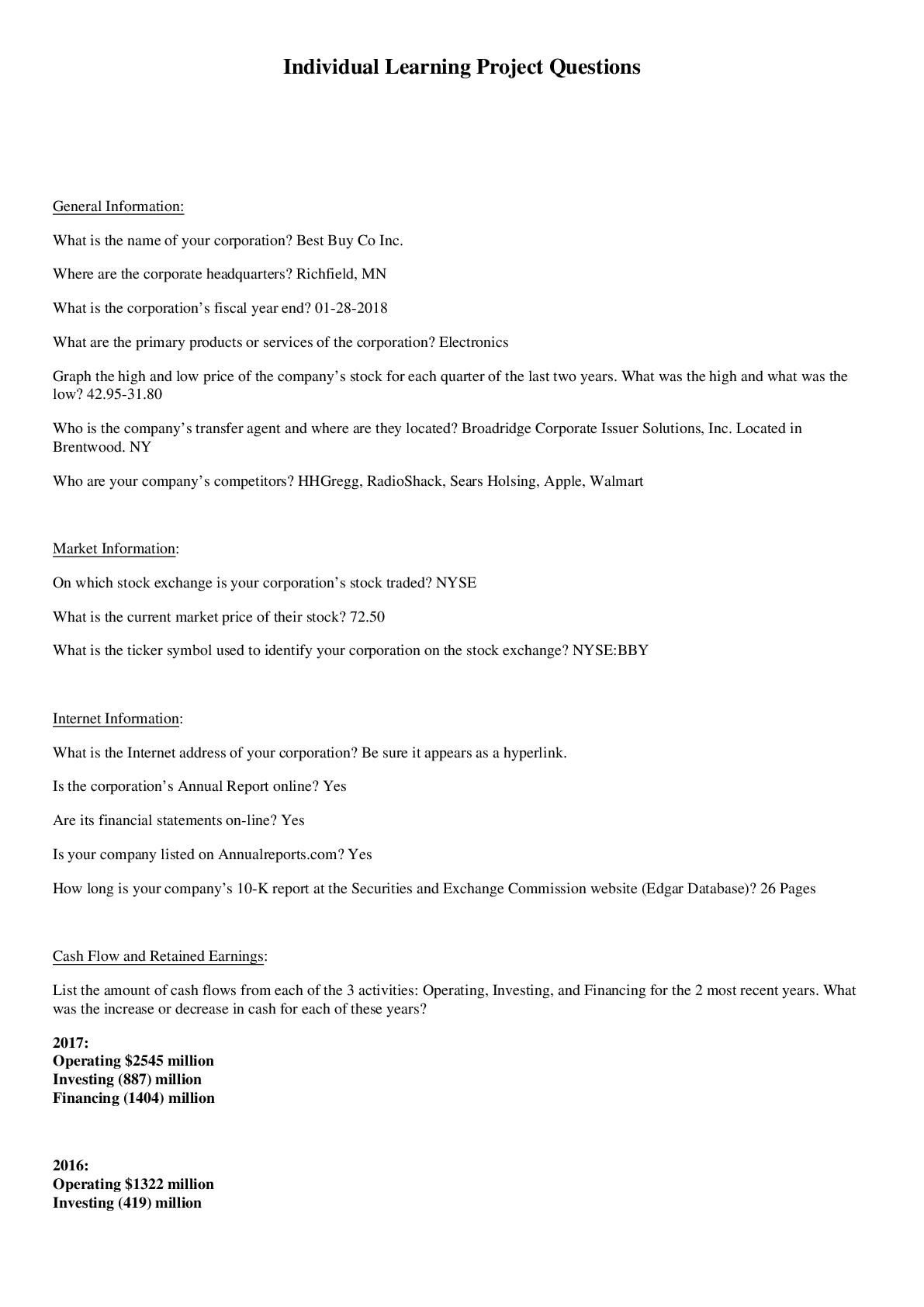Pathophysiology > STUDY GUIDE > pathoshysiology Exam 1 Review COMPLETE questions and answers (All)
pathoshysiology Exam 1 Review COMPLETE questions and answers
Document Content and Description Below
Cellular Biology/Cellular Adaptation/Cellular Injury Chapter 1 o Cellular Adaptation o Atrophy – decrease in size of cells, resulting in reduced tissue mass (immobilized limb in a cast) o Hypert... rophy – increase in size of cells, resulting in an enlarged tissue mass (enlarged heart muscle) o Hyperplasia – increase in number of cells, resulting in enlarged tissue mass (could be compensatory mechanism or hormonal imbalance, cancer) o Metaplasia – one mature cell type is replaced by a different mature cell type (could be compensatory mechanism) o Dysplasia – tissue in which the cell varies size & shape, large nuclei are frequently present, and the rate of mitosis is increased (precancerous - cervical cells) o Anaplasia – cells that are undifferentiated with variable nuclear and cell structures and numerous mitotic figures (in most malignant tumors; basis for grading aggressive tumors) o Neoplasia “new growth”; Neo - new, Plasm - growth o Benign – less serious, do not spread, non-life threatening unless found in certain locations (i.e. brain) o Malignant – undifferentiated & nonfunctional cells that do not appear organized; rapid production & abnormal mitotic figures; cancer o Vocabulary Terms at on page 6-8 (Under headings of “Characteristics of Disease” and “Disease Prognosis.”) Characteristic of Disease: o Pathogenesis: refers to the development of the disease or the sequence of the events involved in the tissue changes related to the specific disease process o Acute disease: indicates a short-term illness that develops quickly with marked signs such as high fever or severe pain o Chronic disease: milder condition developing gradually, such as rheumatoid arthritis, but it persists for a long time and usually causes more permanent tissue damage. Usually marked by intermittent acute episodes. o Subclinical State: exist in some conditions in which pathological changes occur but the patient exhibits no obvious manifestations, perhaps because of the great reserve capacity of some organs. o Latent State: silent stage, in which no clinical signs are evident, o Incubation Period: which is the time between exposure to the microorganism and the onset of signs or symptoms. o Prodromal Period: period compromises the time the early development of a disease when one is aware of a change in the body, but the signs are nonspecific o Manifestations: of a disease are the clinical evidence or effects, the signs, and symptoms, of the disease o Local: found at the site of the problem o Systemic: general indicators of illness o Signs: objective indicators of disease that are obvious to someone other than the affected individual. Can be local or systemic o Symptoms: subjective feelings, such as pain or nausea o Lesion: term used to describe a specific local change in the tissue. Can be microscopic o Syndrome: a collection of signs and symptoms, often affecting more than one organ, that usually occur together in response to a certain condition o Diagnostic tests: laboratory tests that assist in the diagnosis of a specific disease o Remission: is a period or condition in which the manifestations of the disease subside, either permanently or temporarily o Exacerbations: is a worsening in the severity of the disease or in its signs/symptoms o Precipitating Factor: condition that triggers an acute episode o Complications: are new secondary or additional problems that arise after the original disease begins o Therapy/ therapeutic interventions: treatment measures used to promote recovery or slow the progress of a disease. Ex: surgery, drugs, physiotherapy, therapies, behavior modifications o Sequelae: the potential unwanted outcomes of the primary condition, such as paralysis following recovery from stroke o Convalescence or rehabilitation: period of recovery and return to the normal healthy state, may last days or months Disease Prognosis: o Prognosis: probability or likelihood for recovery or other outcomes o Morbidity: indicates the disease rate within a group o Mortality: indicate the relative number of deaths resulting from a particular disease o Autopsy: examination of all or part of the body by a pathologist o Epidemiology: science of tracking the pattern or occurrence of disease o Occurrence: tracked by two factors o Incidence: the number of new cases in a given population noted within a stated time frame. o Prevalence: number of new and old or existing cases within a specific population and time frame. o Epidemics: occur when there are a higher than expected number of cases of an infectious disease within a given area o Pandemics: higher numbers of cases in many regions of the globe o Communicable: disease or infections that can be spread from one person to another o Notifiable/ Reportable: disease must be reported by the physician to certain designated authorities. o Types of tissue necrosis o Liquefaction Necrosis – dead cells liquify due to certain cell enzymes (ex. brain tissue dies or cavity/ulcer development in affected area) o Coagulative Necrosis – cell proteins are altered or denatured (ex. MI due to lack of oxygen) o Fat Necrosis – fatty tissue breaks down into fatty acids in the presence of infection or certain enzymes o Caseous Necrosis – form of coagulation necrosis; thick, yellowish, “cheesy” substance (ex. Tuberculosis) o Infarction - area of dead cells resulting from lack of oxygen (ex. MI) o Gangrene – necrotic tissue due to lack or loss of blood supply followed by invasion of bacteria o Seven Steps for Health 1. Be a nonsmoker and avoid second-hand smoke. 2. Eat 5 to 10 servings of vegetables and fruit a day. Choose high-fiber, lower-fat foods. If you drink alcohol, limit your intake to one to two drinks a day. 3. Be physically active on a regular basis. This will also help you to maintain a healthy body weight. 4. Protect yourself and your family from the sun. 5. Follow cancer screening guidelines. 6. Visit your doctor or dentist if you notice any change in your normal state of health. 7. Follow health and safety instructions at home and at work when using, storing, and disposing of hazardous materials. Genetics Chapter 21 Congenital: Meaning o Genetic & inherited disorders present at birth Teratogens: Meaning and types o Agents that cause damage during embryonic or fetal development o Types: Physical agents Metabolic conditions Infections Drugs & Chemicals Genetic Diseases - know where these examples fall under inheritance; chance of inheritance as it applies to X-linked, autosomal dominant, and autosomal recessive, characteristics, and risk factors if applicable. o Down syndrome: Chromosomal Disorder (Trisomy 21) Inheritance? No Characteristics: Small head, round face, flat facial profile Slanted eyes and epicanthic fold Large tongue, high-arched palate Small hands, single palmar crease Short stature Muscles tend to be hypotonic; loose joints Delayed developmental stages Cognitive impairment ranges from mild to major Delayed or incomplete sexual development Males infertile Females have lower rate of conception Risk factors? Maternal age o Turner’s Syndrome or Monosomy Occurs when only one sex chromosome, the x chromosome is present. This person has only 45 chromosomes, resulting in a variety of physical abnormalities and lack of ovaries. Inheritance? Most cases are not inherited Chance of Inheritance? Women with syndrome who conceive naturally have 30% chance of having a fetus with Turner Syndrome Characteristics Short stature and webbed neck Delayed puberty Infertility Heart defects Certain learning disabilities Risk Factors o Marfan’s: Autosomal Dominant Disorder Inheritance? Yes Chance of inheritance? Affected parent has a 50% probability of passing the disorder on to each child regardless of gender Characteristics: Skeletal deformities like pectus excavatum and abnormal curvature of the thoracic spine Aorta is wider and more fragile leading to leakage of the aortic valve or tears to the aortic wall Risk factors? o Huntington’s: Autosomal Dominant Disorder Inheritance? Yes Chance of inheritance? Affected parent has a 50% probability of passing the disorder on to each child regardless of gender Characteristics: Difficulty swallowing Strange and uncontrolled movements that are either slow or wild and jerking Risk factors? Developed later in life (30-40 y.o.) o Color Blindness: X-Linked Recessive Disorders Inheritance? Yes, may appear to skip generations Chance of inheritance? Carrier females have a 50% chance of producing an affected male child and an equal chance of producing a carrier female child in each pregnancy Characteristics: Risk factors? Fam. Hx o Hemophilia: X-Linked Recessive Disorder Inheritance? Yes, may appear to skip generations Chance of inheritance? Carrier females have a 50% chance of producing an affected male child and an equal chance of producing a carrier female child in each pregnancy Characteristics: Prolonged bruising Risk factors? o Duchenne’s Muscular Dystrophy: X-Linked Recessive Disorder Inheritance? Yes, may appear to skip generations Chance of inheritance? Carrier females have a 50% chance of producing an affected male child and an equal chance of producing a carrier female child in each pregnancy Characteristics: Risk factors? o Cystic Fibrosis: Autosomal Recessive Disorders Inheritance? Yes Chance of inheritance? 25% that the child will be born with the unaffected genotype 50% that the child will be born with the carrier genotype 25% that the child will be born with the affected or disease genotype Characteristics: Risk factors? o Turner Syndrome: Chromosomal Disorder (Monosomy X) Inheritance? No Characteristics: Short stature Webbed neck Risk factors? o Klinefelter’s Syndrome: Chromosomal Disorder (Polysomy X) Inheritance? No Characteristics: Small testes and do not produce sperm Develop breast tissue Risk factors? Chapter 2 What controls sodium balance o the sodium-potassium pump or active transport, resulting in sodium levels that are high in extracellular fluids and low inside the cell Causes of Edema o Increased Capillary Hydrostatic Pressure o Loss of Plasma Proteins o Obstructions of the Lymphatic Circulation o Increased Capillary Permeability Electrolytes found in intracellular fluid and extracellular fluid [Show More]
Last updated: 2 years ago
Preview 1 out of 20 pages
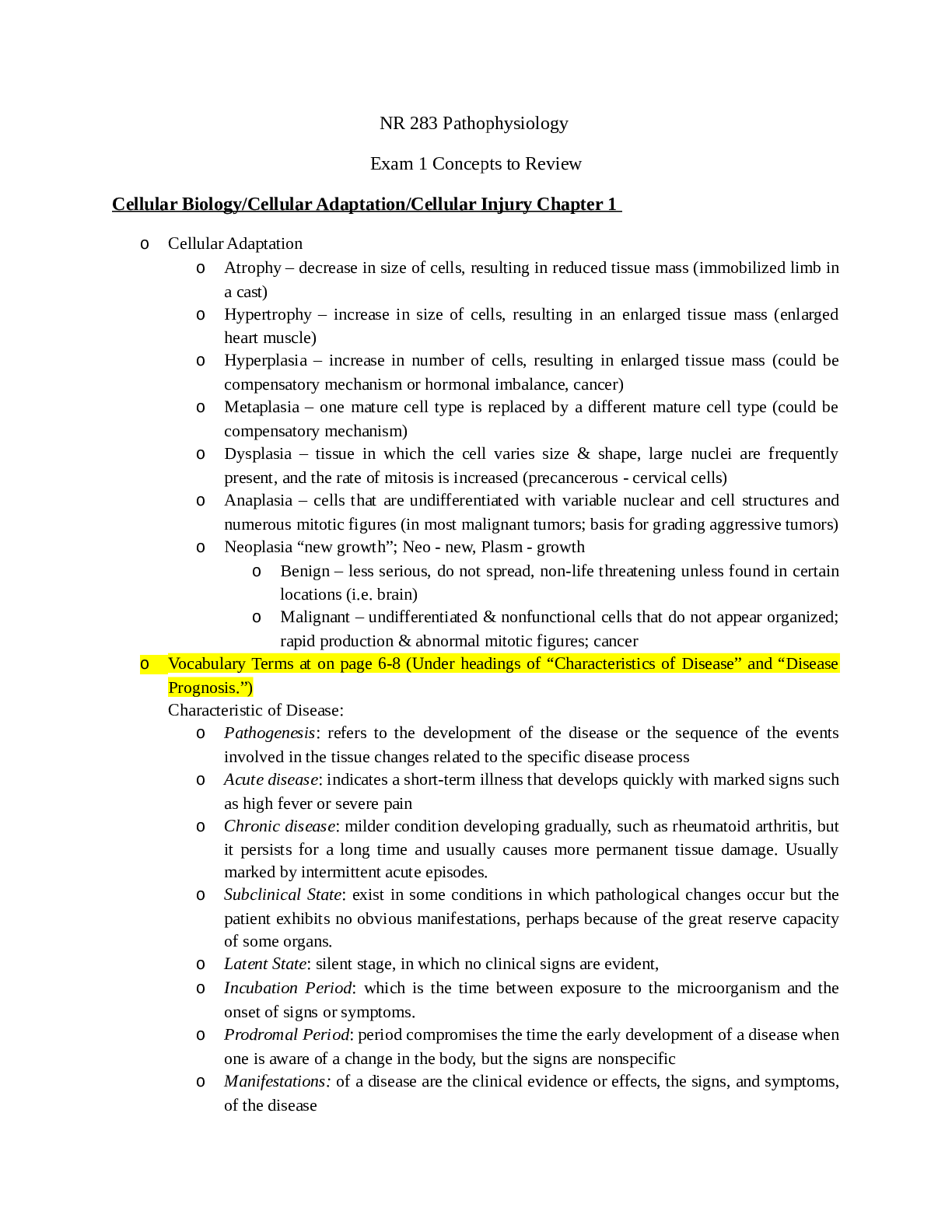
Buy this document to get the full access instantly
Instant Download Access after purchase
Buy NowInstant download
We Accept:

Reviews( 0 )
$7.00
Can't find what you want? Try our AI powered Search
Document information
Connected school, study & course
About the document
Uploaded On
Apr 26, 2021
Number of pages
20
Written in
Additional information
This document has been written for:
Uploaded
Apr 26, 2021
Downloads
0
Views
80



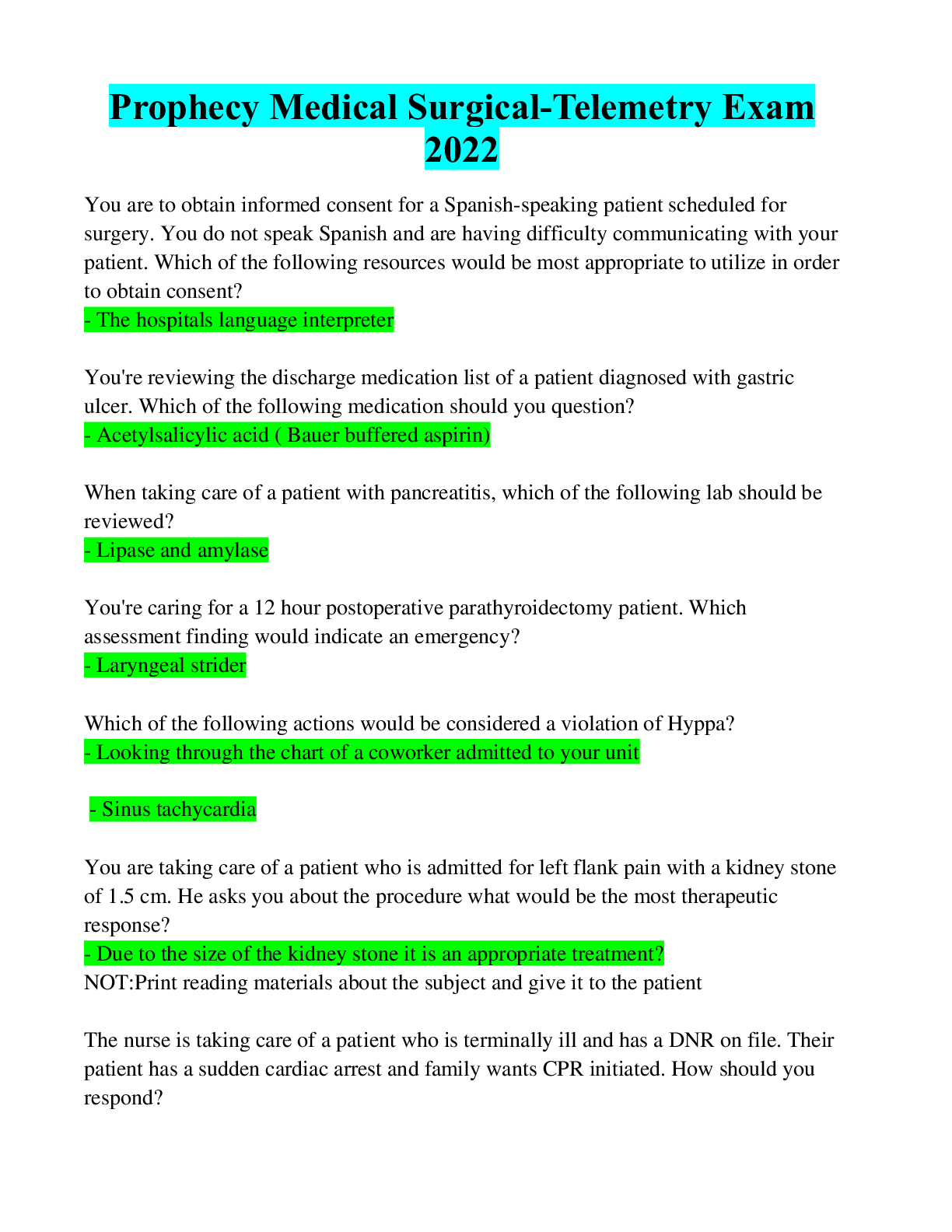


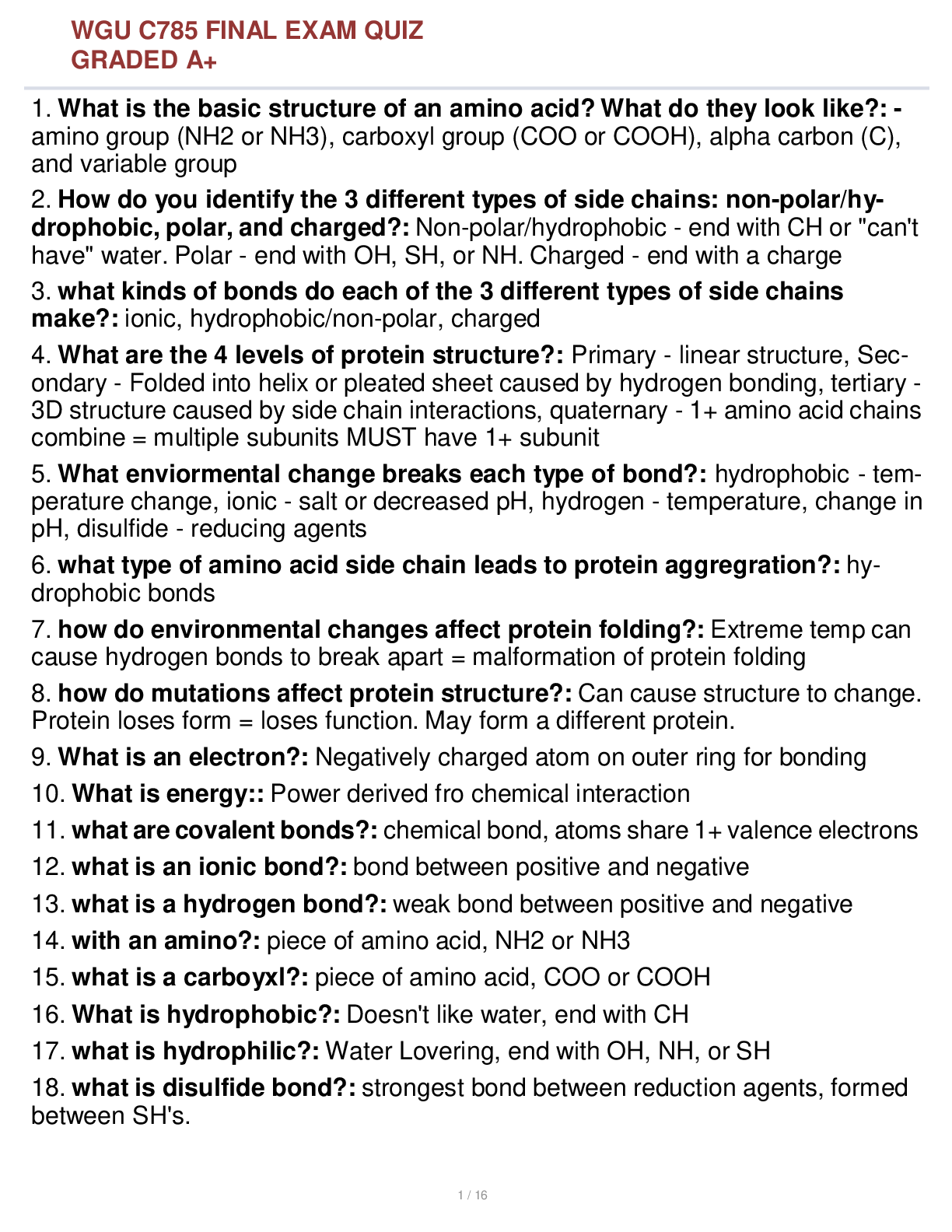
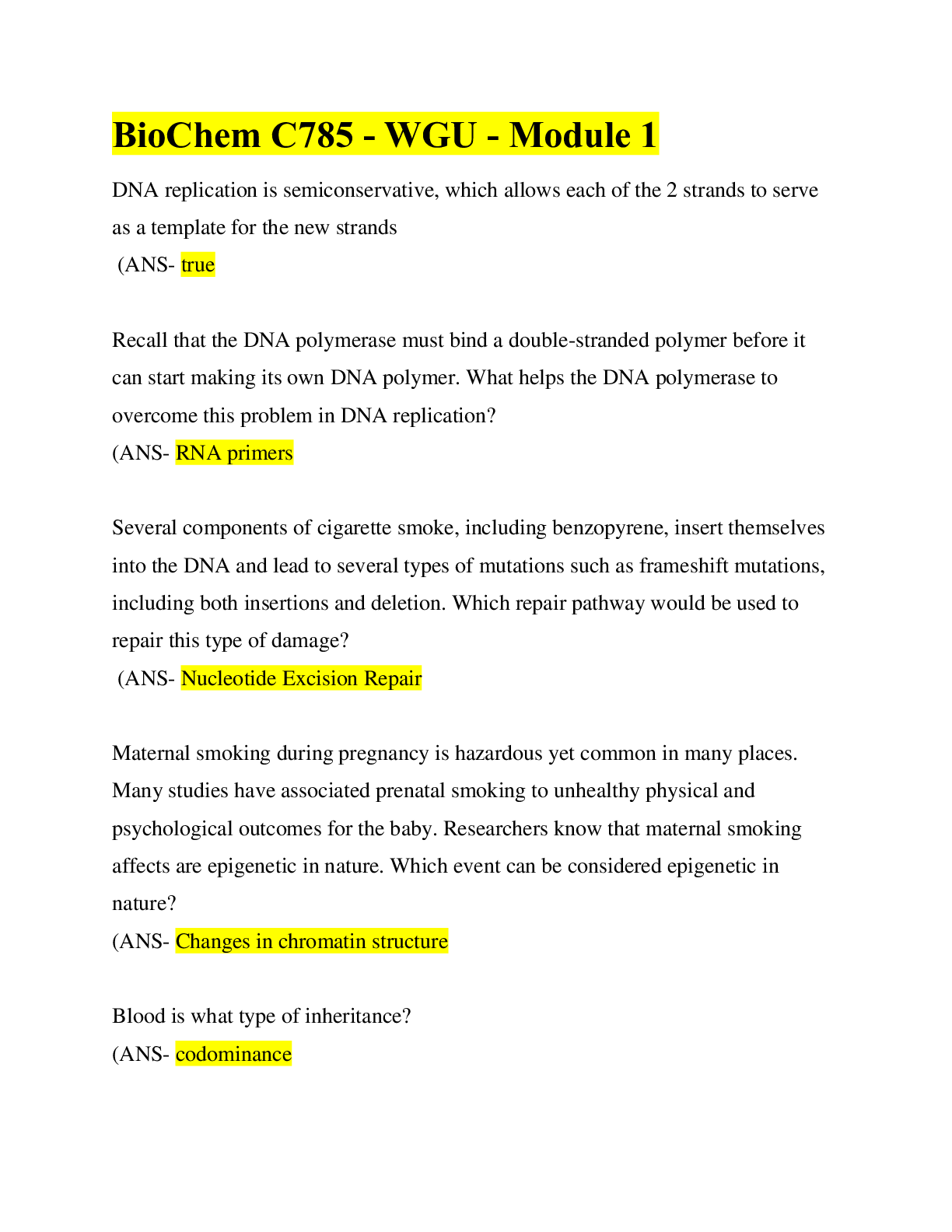
.png)

.png)


